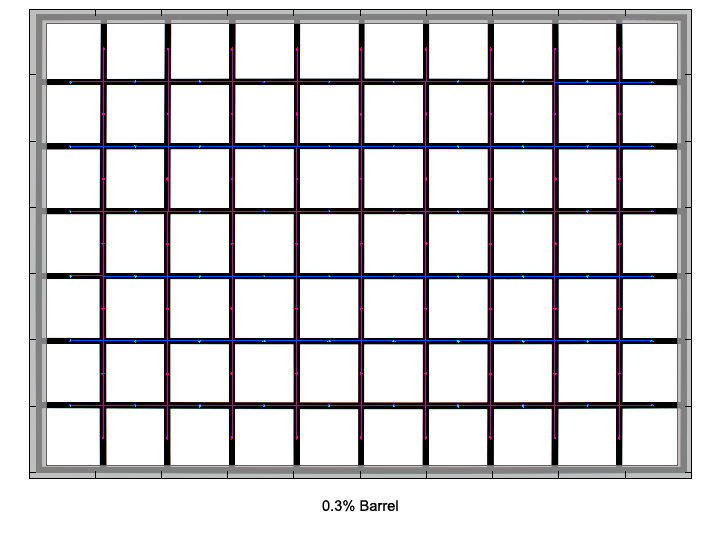|
Page 2 of 3

Distortion
Since the lens is designed for a much larger image circle than required for the small CX sensor, it's hardly surprising that the lens shows almost no distortion on Nikon 1 cameras.

The chart above has a real-world size of about 120x80cm.
Vignetting
For the same reason as mentioned in the distortion section, vignetting is no issue on CX cameras.

MTF (resolution)
The lens showed mixed performance in the lab on our CX test camera. The center resolution is only good wide open, but improves significantly by stopping down. From f/4 down to f/8 the center sharpness is excellent, at f/11 and beyond diffraction reduces the resolution significantly.
The borders and extreme corners show significantly less resolution. Wide open, sharpness is only poor here. The lens needs to be stopped down quite a bit to achieve good resolution in these areas.
Please note that the MTF results are not directly comparable across the different systems!
Below is a simplified summary of the formal findings. The chart shows line widths
per picture height (LW/PH) which can be taken as a measure for sharpness.
If you want to know more about the MTF50 figures you may check out the corresponding
Imatest Explanations

Chromatic Aberrations (CAs)
Chromatic aberrations (color shadows at harsh contrast transitions) range from roughly 1.1 to 1.4 pixels at the image borders throughout the tested aperture range. This might be visible in very large prints (or crops). However, CAs can easily be corrected in software, in fact the Nikon 1 cameras automatically do so if you shoot JPGs.

Bokeh
One of the primary usage scenarios for a large aperture lens is to separate the main subject from the background. In such an image the quality of the bokeh (out-of-focus blur) is of major significance.
On a DSLR the Nikon AF-S 28/1.8 certainly qualifies as a "fast" lens. As the images below show, the depth of field potential is rather limited on Nikon 1 cameras with their small CX sensors.
The lens in general delivers quite pleasing background blur, except for the transition zone, where bokeh shows some nervousness. Unfortunately the high density CX sensor magnifies the bokeh fringing of the lens considerably, which not only troubles background highlights, but bokeh quality in general as long as strong contrast edges are involved.

Bokeh Fringing
Bokeh fringing (non-coinciding focal planes of the various colors) is a common issue with relatively fast glass. As you can notice below, the halos have different colors - magenta (red + blue) in front the focus point and green beyond. Truly "apochromatic" lenses don't show this kind of fringing but these lenses are very rare especially below 100mm. Unlike lateral lateral CAs, bokeh fringing cannot easily be fixed in post processing.
Typical for most fast primes, the AF-S 28/1.8 shows some amount of fringing at large aperture settings, which can of course be reduced by stopping down.
These shots also illustrate that the lens does not suffer from focus shift when stopping down (focus shifts are not uncommon for fast prime lenses). This is true not only for very short focus distances (as in the shots below) but also for larger subject distances.
|